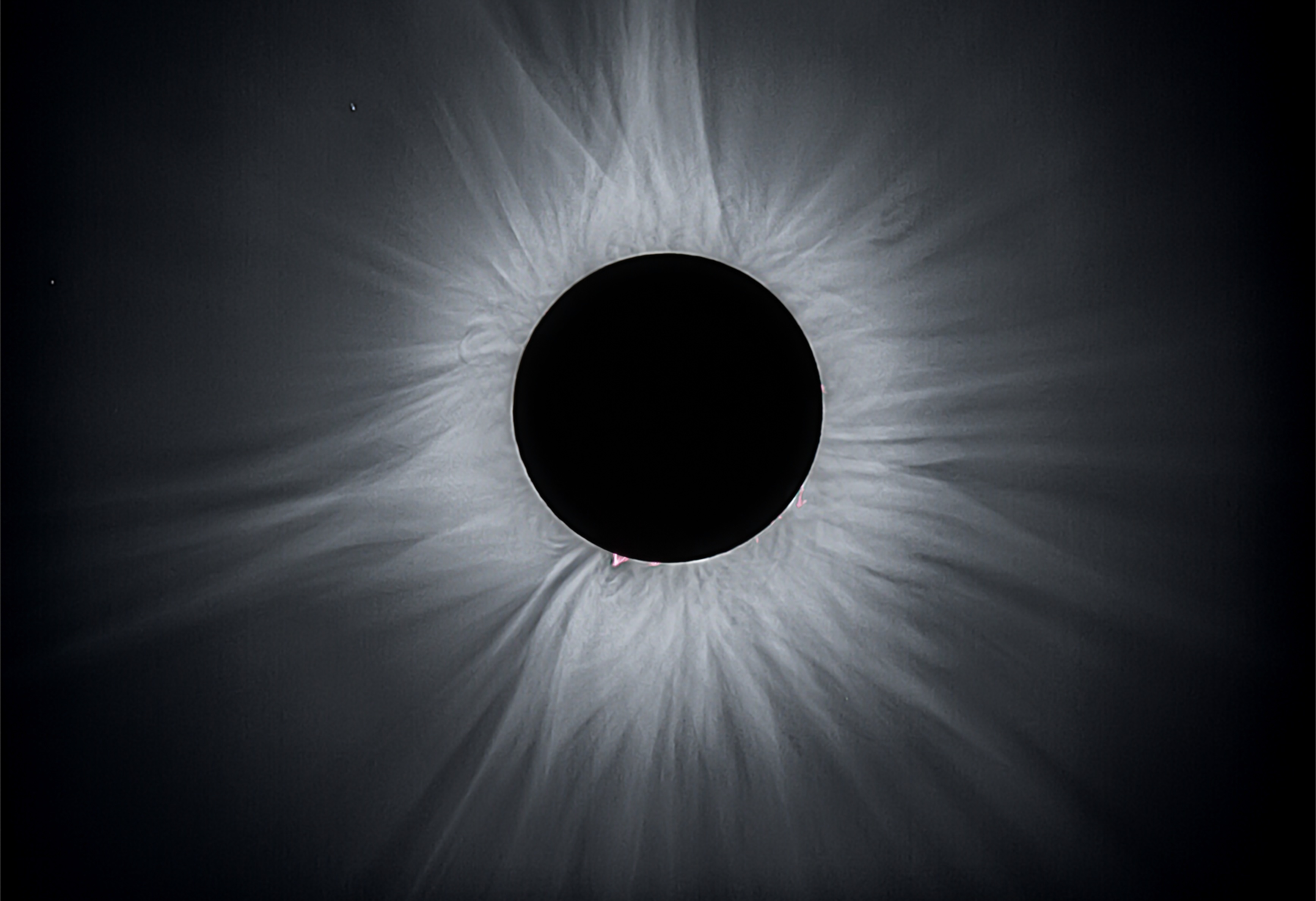Intermediate Guiding Question
How do gravitational forces in the Sun-Earth-Moon system cause seasons, eclipses, and lunar phases?
Heliophysics Big Idea 1.1
Educator Background
-
Gravity is a force between two objects, and is determined by both the sizes of the objects and the distance between the objects. Even though the Sun is very far away from Earth, the Sun is very big, causing Earth to orbit around the Sun. Gravity influences the shape of the orbit, causing phenomena on Earth like solar eclipses.
-
Learning Constraints
At the Middle Level students quantify their understanding of gravity by using data to analyze the scale of objects in the Solar System (MS-ESS1-3), explore how the mass of objects affects the force of gravity (MS-PS2-4), and how gravity affects the motions of objects (MS-ESS1-2). At this level students are also exploring the motions of the Sun-Earth-Moon system, for example lunar phases, eclipses, and seasons (MS-ESS1-1).
-
Connect to Heliophysics
Connect to the Sun by teaching students about how the shapes of orbits (elliptical) dictate patterns. And while the MS-ESS1-2 clarification statement emphasizes that the assessment does not include Kepler’s Laws of Orbital Motion, the first law, which says that the shape of planetary orbits is elliptical, is applicable to describing the difference between an annular solar eclipse and a total solar eclipse, and does not need to be quantified until the next level. Ask learners to share their observations if they participated in the Annular Solar Eclipse, Sat. Oct. 14, 2023, and/or the Total Solar Eclipse, Mon., Apr. 8, 2024.
-
Extend Exploration
Extend student exploration by emphasizing that Earth stays in orbit, rather than going in a straight line, flying off into space, because gravity from the Sun holds it in place (MS-PS-2-2). To connect gravity to the space weather phenomena, consider that coronal mass ejections from the Sun are also influenced by the Sun's gravity - they start out traveling very fast, then slow down as the gravity of the Sun pulls back on them. If they got here faster, they would produce more pressure on the Earth's magnetic field.
-
Differentiate for Beginner Learners
To support beginner students, revisit making graphical displays of patterns in the sky (5-ESS1-2).
-
Differentiate for More Advanced Learners
Challenge students at the next level to quantify Kepler's Laws of Motion, Newton's Law of Gravity, and explore orbital geometry.

NASA Space Place: What is a Solar Eclipse?
Video Length: 2:06
Search the Resource Database for more videosRecommended Resources
Explore this guiding question with these intermediate level resources.
Heliophysics Resource Database
Use the guiding question above to explore resources at this level or go directly to our database to search for resources by level, NGSS performance expectation, topic, and mission.
Resource Database



























